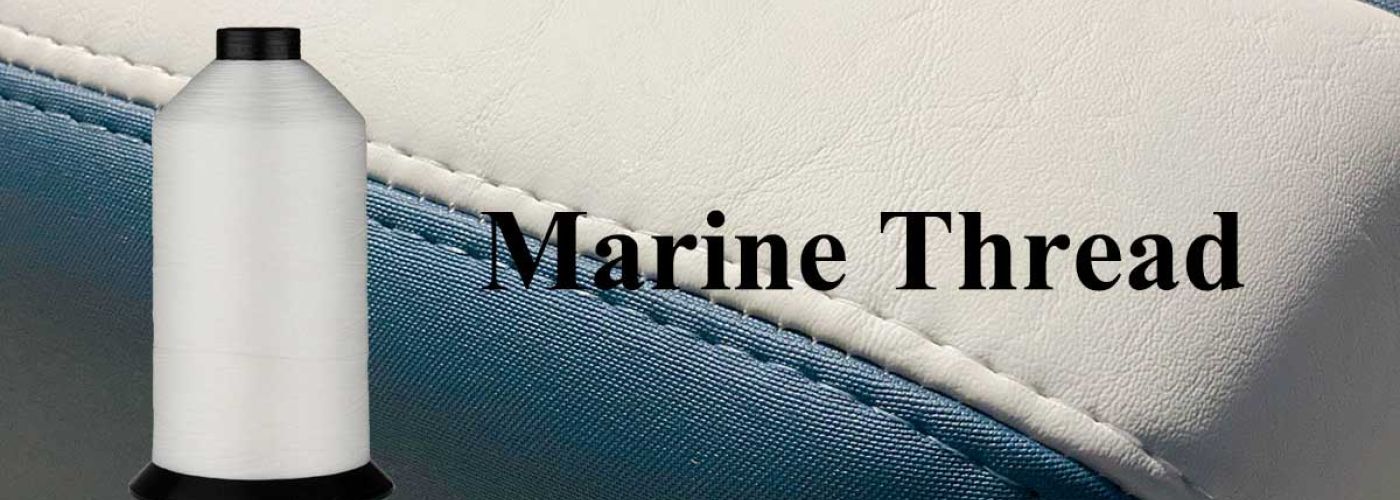
Marine Thread: A Thread Factory’s Guide for Users & Wholesalers
Introduction: Why Marine Thread Matters
Position your factory as an industry leader: “As a trusted marine thread factory, we engineer solutions for the harshest maritime environments.”
-
Define marine thread: High-performance thread resistant to saltwater, UV, and abrasion.
-
Highlight applications: Sailmaking, fishing nets, boat upholstery, rigging, and aquaculture.
-
Ensure durability, safety, and cost-efficiency for marine operations.
Production Techniques: Precision Meets Innovation
A. Material Selection
-
Polyester: UV-resistant, affordable (common for sails and covers).
-
Nylon: Elasticity + strength (ideal for nets and tow lines).
-
Dyneema®: Ultra-high tensile strength (replaces steel in rigging).
-
PTFE (Teflon): Chemical/heat resistance (industrial marine uses).
B. Manufacturing Processes
-
Extrusion & Spinning: Synthetic fibers tailored for density and twist. These threads are manufactured to meet high durability and performance standards.
-
Braiding: Multi-strand techniques for maximum strength.
-
Coatings: Silicone (waterproofing), wax (ease of sewing), antimicrobial treatments.
C. Quality Assurance
-
Rigorous testing: Tensile strength, saltwater immersion, UV exposure.
-
Certifications: ISO 9001, OEKO-TEX® (eco-friendly compliance).
Types of Marine Thread: Matching Thread to Marine Vinyl Task
By Material: Polyester thread and PTFE thread are the two main types of marine threads.
-
Polyester: Budget-friendly, versatile (Tex 40–70 weights). The extra twist in the thread helps maintain strength and stability.
-
Nylon: Stretch + durability (fishing gear, upholstery).
-
Dyneema®: Lightweight + unbreakable (high-stress rigging).
-
PTFE: Specialty uses (chemical linings, gaskets).
By Application:
-
Heavy-Duty: Braided Dyneema® for sails/winches.
-
General-Purpose: UV-stabilized polyester for covers/nets.
-
Specialty: Flame-retardant or anti-mold threads.
Key Considerations for Marine Thread Selection for Outdoor Use
-
Consider the type of fabric you are working with, such as marine vinyl or canvas.
-
Think about the level of UV resistance and durability you need for your project.
-
Check the thread’s resistance to chemicals and mildew.
-
Consider the color and finish of the thread to match your project’s requirements.
-
Ensure the threads are tested to meet or exceed specific quality assurance standards.
Evaluating UV Resistant Thread Features and Specifications
-
Look for threads with advanced UV protection and a non-wicking finish.
-
Check the thread’s tensile strength and resistance to abrasion.
-
Consider the thread’s length and quantity, as well as the spool size.
-
Check the thread’s compatibility with your sewing machine.
-
Ensure the thread is suitable for outdoor use, with features like UV resistance, salt, and mildew resilience, making it ideal for outdoor textiles and projects like boat canvases.
Market Prices: Balancing Cost & Performance
Price Drivers:
-
Raw materials (e.g., petroleum-based nylon fluctuates with oil prices).
-
Complexity (braided threads cost 20–30% more than monofilament).
-
Certifications (eco-friendly coatings add ~15% premium).
-
Each product is meticulously tested to ensure reliability and high performance, particularly for outdoor materials that require durability and colorfastness.
Vs. Alternatives:
-
Steel wire: Stronger but heavier/corrosion-prone.
-
Marine thread: Lighter, flexible, and easier to maintain.
Industry Trends: What’s Shaping 2024
-
Sustainability: Recycled polyester threads, biodegradable coatings. It's also crucial to select threads that can withstand harsh outdoor conditions, ensuring long-term durability in marine applications.
-
Smart Textiles: Threads with embedded sensors for tension monitoring.
-
Customization: Color-matching, branded packaging, and tailored coatings.
-
Emerging Markets: Asia-Pacific demand (aquaculture, offshore wind farms).
Marine Thread Industry Overview
Key Regions:
-
Asia-Pacific: Manufacturing hub (China, India) with cost-effective solutions.
-
Europe/North America: High-end, innovation-driven products.
Challenges:
-
Competition from low-cost producers.
-
Rising raw material costs.
Opportunities:
-
Offshore renewable energy (wind turbine rigging).
-
Eco-tourism requiring durable, eco-friendly materials.
-
High-performance polyester thread for outdoor applications, including tarps, ensuring seam strength and fade resistance.
Conclusion: Partner with a Factory Built for the Future
Reinforce your factory’s strengths:
-
Cutting-edge R&D, sustainable practices, and customizable solutions.
-
Call to action: “Contact us for competitive quotes, samples, or technical support.”
 Whatsapp:
Whatsapp: